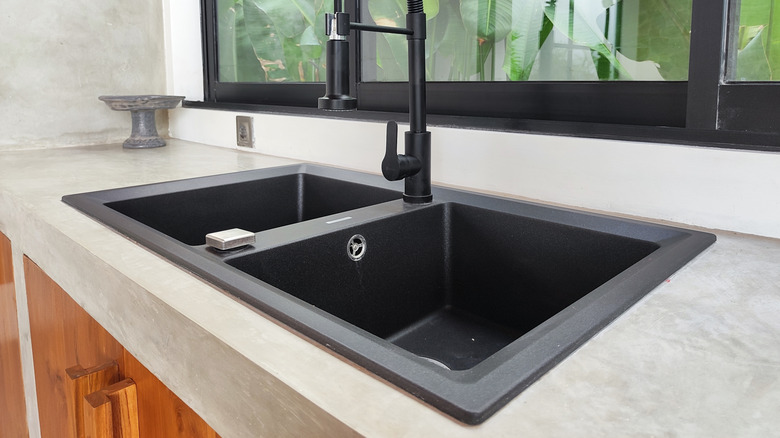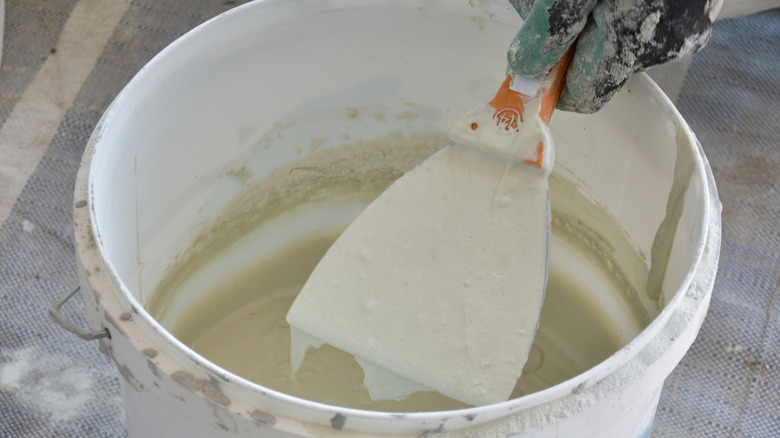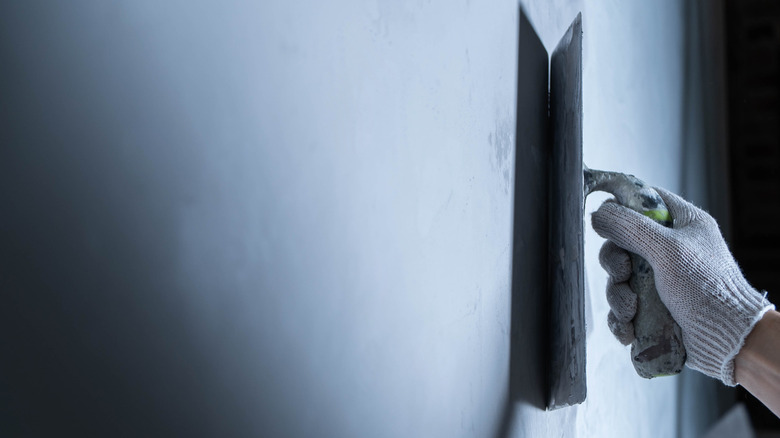How To DIY A Microcement Countertop
Microcement is an affordable countertop solution that comes in a variety of colors and finishes. Basically, microcement is cement applied in very thin layers to a surface. Because it is applied by hand, the results are always unique, making it an interesting feature in any home. It can be applied on top of a number of materials, including MDF, marble, granite, and more. You can even learn how to DIY mirocement over existing tile for a budget-friendly upgrade. With sealers applied, it is food-safe, durable, waterproof, and heat-resistant, making it a popular choice for bathrooms and kitchens, whether it is on the walls, floors, or counters. Plus, the minimalist, industrial style of cement in a home creates a very cool and modern aesthetic. With its many benefits and relatively affordable price, anyone interested in an inexpensive but gorgeous new countertop should consider the unique option of applying microcement for a fresh look.
While applying a microcement countertop is a project often completed by professionals, a skilled DIYer can also achieve a great final result at a lower cost. Check the signs that microcement is the right choice for your bathroom or kitchen and learn all about it to determine if this material is a good choice for you. You then need to determine if you can tackle this upgrade on your own and handle the potential problems that may arise or if you should hire a professional. If you decide to give this DIY a try, simply gather your materials and you can get started.
DIYing microcement countertops
For this project, you will need masking tape, primer, a trowel, an external corner tool, an orbital sander, a microcement kit, a paint mixing drill, microcement sealant, and a foam roller. You should also wear gloves and a mask to protect yourself throughout the process. Your microcement kit may come with all of the microcement components, or you may need to purchase primer and sealant designed for microcement separately. Additionally, fiberglass mesh is sometimes recommended as a base to prevent cracking, but it is not always necessary.
Once you have your materials, prep the countertops by cleaning thoroughly, sanding until the surface is smooth and level, and waiting for it to dry completely. Then, use masking tape to protect any areas you wish before applying your primer according to the primer's directions. Next, mix the components of the main coating according to the product's instructions using a paint mixing drill. Be sure to wear your protective gear. Using a trowel, apply and smooth out a thin layer of microcement, trying to stick to a thickness of about 1 to 2 millimeters. Allow the first coat to dry completely before applying a second, equally thin layer. Consult your kit's instructions to determine how long each layer will take to dry and if you should sand between each layer. Finally, apply the sealant with a foam roller. At least two layers of sealants are typically recommended, but, as with the other steps, you should defer to your kit's instructions, as microcement products may vary.
Should you DIY a microcement countertop?
This DIY countertop project is certainly doable, but you do run the risk of potential cracks in the future if you are not experienced with cement. Microcement requires precise timing and smooth application, and mistakes can make your resulting counter prone to cracking or damage. Even the temperature of the room and surfaces can impact the success of the application. Creating the exact handcrafted look you want can also be challenging. Finally, it is worth noting that DIYing microcement is a very time-consuming process, with long wait times between the many necessary layers likely adding up to multiple days. Despite these potential issues, if you carefully read and follow the instructions for each of your microcement products and the general guidelines of application, you should be able to get a successful DIY result for your kitchen or bathroom countertops. While it may be tough, the result is beautiful and well worth the effort.
Now that you've completed your DIY countertop upgrade, it's important to take the proper steps to keep the surface in good shape. To clean your fresh microcement countertops, use a mild cleaner and a non-abrasive cloth, avoiding any solutions that are overly harsh. You should also double-check your sealant's instructions to find out if you ought to reseal the countertops in the future and if you can do so using the same sealing product. With these simple steps, it should be easy to maintain your DIY countertops on your own.


